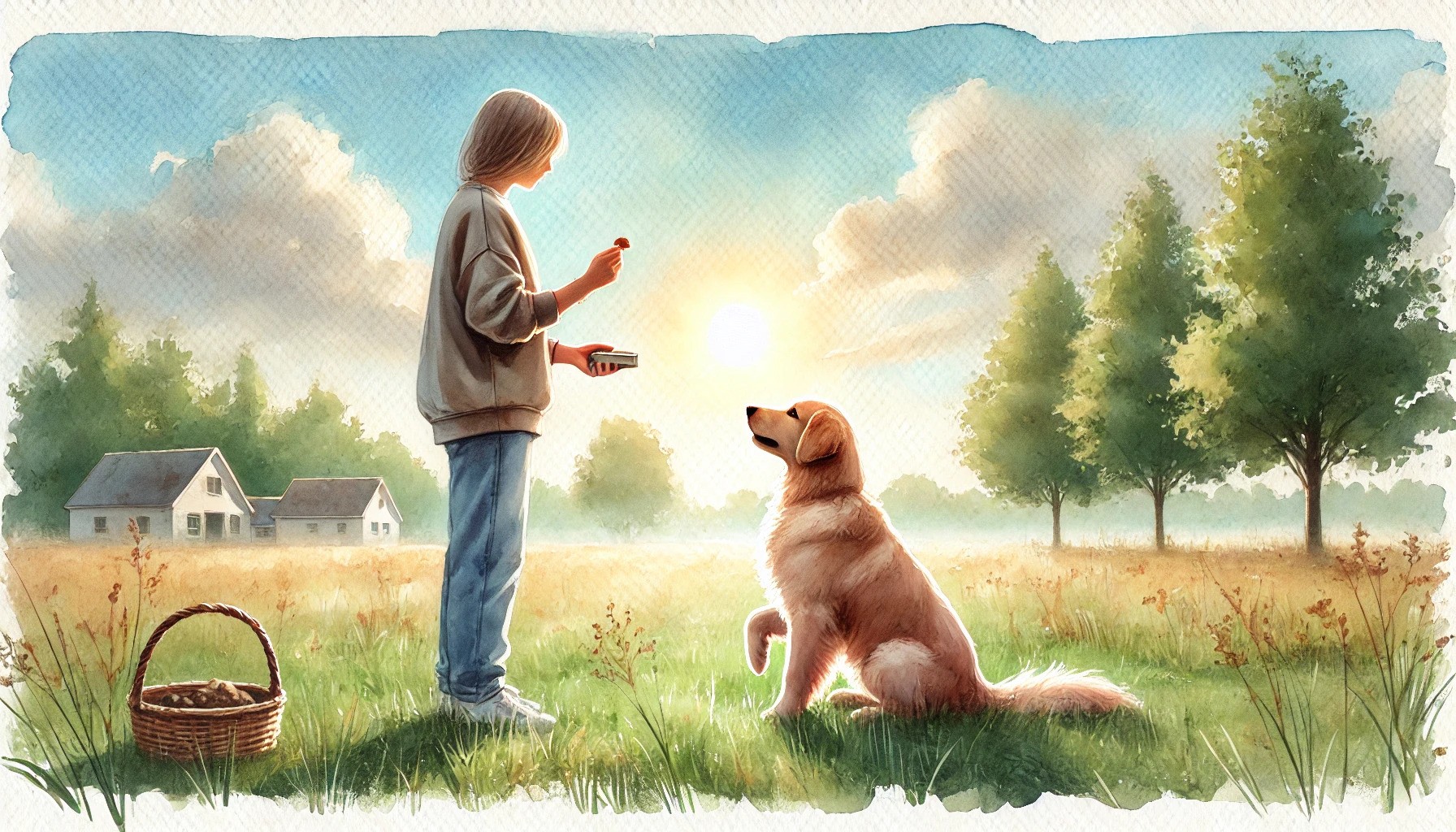Are Dogs Easy to Trains?

Every dog owner’s dream: a well-trained, obedient companion who listens to every command. But is that dream easily achievable? The answer is more nuanced than a simple yes or no. While some dogs take to training like ducks to water, others can present unique challenges that require patience, creativity, and consistency. Whether you’re teaching your pup to sit on command or working on advanced obedience, understanding the factors that influence a dog’s trainability is key to success.
In this blog, we’ll dive deep into the factors that impact a dog’s ability to learn and respond to commands. From breed and temperament to training methods and the environment, we’ll explore how these elements shape the training process. So, is training a dog easy? Well, that depends—let’s take a closer look.
Section 1: Key Factors That Influence Dog Trainability
Dogs Breed and Genetics:
When it comes to training, breed matters. Certain breeds are more predisposed to being easily trained, thanks to their intelligence, eagerness to please, and natural instincts. For example, Labrador Retrievers, Border Collies, and Golden Retrievers are frequently cited as some of the easiest dogs to train. These breeds excel in environments where they’re asked to follow commands and work alongside humans. But genetics doesn’t only dictate intelligence—it can also influence temperament. Dogs with traits like heightened fearfulness or aggression might present more challenges during training, requiring specialized techniques to address these behaviors.
Temperament and Personality:
Just as humans have unique personalities, so do dogs. Even within a breed known for being trainable, individual temperament plays a crucial role. Confident, social, and affectionate dogs are often more responsive to training because they naturally crave human interaction and approval. On the other hand, anxious, independent, or stubborn dogs may take longer to train and may need a more patient approach. Understanding your dog’s personality can guide you in selecting the right training techniques and adjusting expectations.
Training Methods:
The method you use to train your dog can make all the difference. Positive reinforcement—rewarding your dog with treats, toys, or praise when they follow commands—is widely recognized as the most effective and humane approach. This method encourages dogs to repeat desired behaviors in exchange for rewards. On the flip side, dominance-based methods or aversive techniques, which rely on punishment or intimidation, are not only less effective but can also damage the bond between you and your dog. Clear communication, patience, and consistency are the pillars of successful training, regardless of the method used.
Consistency and Environment:
Consistency is key in any training regimen. Dogs thrive when they know what to expect and when commands are given in the same way every time. Practicing regularly, especially in various environments, helps dogs generalize their learning. For example, having a dog sit on command at home is one thing, but can they do it in a busy park or while you’re at the vet? Short, frequent training sessions are far more effective than long, sporadic ones, as they help keep your dog’s focus and enthusiasm intact.
Owner Experience and Commitment:
For first-time dog owners, training can be a daunting task. Certain breeds, especially high-energy or independent ones, might require more experienced handlers to ensure training success. However, regardless of experience level, the key to successful training lies in commitment. Regular practice, setting clear rules, and utilizing the right resources (such as training books, videos, or classes) will ensure progress. It’s important to remember that training is an ongoing process, and persistence is just as critical as knowledge.
Section 2: How Long Does It Take to Train a Dog?
Training a dog is a rewarding journey, but how long should it take to see results? The answer depends on various factors, including the type of skill being taught, the dog’s age, breed, and the consistency of training. Let’s break down the typical timelines for common dog training commands.

Dogs Training Timelines for Common Commands:
Sit/Down:
Time to Train: 1-2 weeks
- These basic commands are usually among the first things dogs learn. Puppies and eager-to-please breeds may pick this up quickly, while older or more independent dogs might take a bit longer.
Stay:
Time to Train: 2-8 weeks
- “Stay” is a more advanced command because it requires the dog to remain in place for varying durations. Depending on the dog’s temperament and your consistency, training this can take anywhere from a couple of weeks to a couple of months.
Drop It:
Time to Train: 1-4 weeks
- The “drop it” command can be challenging, especially for dogs that are possessive of toys or food. The training time can vary, but it usually doesn’t take longer than a month if you are consistent with rewards and clear cues.
Loose Leash Walking:
Time to Train: 1-3 months
- Walking on a leash without pulling is a skill that requires patience. It often takes a few months to teach, especially for energetic or stubborn dogs, as they need to learn to remain calm and focus on you during walks.
Potty Training:
Time to Train: 3-6 months
- Potty training can be one of the most time-consuming tasks, especially for puppies. Older dogs may catch on faster, but it generally takes at least 3-6 months to consistently establish potty habits, depending on your dog’s age and how frequently you can supervise and guide them.
Crate Training:
Time to Train: 1-3 months
- Crate training involves getting your dog comfortable with spending time in their crate. While some dogs adapt quickly, others might take a bit longer to adjust, especially if they have negative associations with confined spaces. Patience is key.
Factors Affecting Training Time:
While these timelines offer a general guideline, several factors can affect how long it will take your dog to master each skill:
Age of the Dog:
- Puppies often have more energy and a shorter attention span, but they tend to learn quickly with consistent training. Older dogs, especially those with established habits, may take more time to unlearn old behaviors and adopt new ones.
Breed Traits and Individual Characteristics:
- Certain breeds are naturally more inclined to pick up commands quickly. For instance, herding breeds like Border Collies and Sheepdogs tend to be fast learners, while more independent or stubborn breeds might take longer to train. Additionally, every dog has its own personality, which can also impact how quickly they respond to training.
The Trainer’s Experience and Consistency:
- A trainer’s skill, patience, and consistency will dramatically impact how fast a dog learns. First-time dog owners may face a steeper learning curve, while experienced trainers know how to create an efficient training environment and avoid common mistakes that can slow progress.
Section 3: Tips for Easier Dog Training
Training a dog doesn’t have to be a long, frustrating process. With the right approach, it can be both effective and enjoyable for both you and your dog. Here are some helpful tips to make the journey smoother.
High-Value Rewards:
One of the best ways to motivate a dog, especially one that is more challenging to train, is using high-value rewards. These could be tasty treats, a favorite toy, or extra praise. For dogs that are less food-driven, toys or activities like playtime can be great motivators. By using rewards that your dog finds particularly enticing, you’ll encourage quicker learning and more enthusiastic participation.
Short, Fun Sessions:
To keep your dog engaged and avoid frustration, aim for short, upbeat training sessions—10 to 20 minutes at a time. Dogs, especially puppies, can get bored or distracted easily, and long training sessions might lead to burnout for both you and your dog. Keeping sessions fun and positive will maintain their interest and ensure they enjoy the process.
Consistency in Commands:
Dogs thrive on consistency. Ensure that everyone in your household is using the same commands and expectations. If one person says “sit” and another says “down,” it can confuse your dog. Consistency in verbal cues, hand signals, and rules is crucial for reinforcing learning and avoiding mixed signals.
Increasing Distractions Gradually:
Once your dog has mastered a command in a quiet environment, begin to introduce distractions gradually. Start with mild distractions, like noise or movement, and slowly increase the level of difficulty. This will help your dog generalize the command to different situations, making them more reliable in real-world scenarios.
Transitioning to Praise:
As your dog becomes more proficient in responding to commands, start transitioning from treats to praise and play. While treats are essential for motivating your dog in the early stages, relying too much on them can make your dog dependent on rewards. Verbal praise and a good play session can be just as rewarding, and they’ll ensure that the training experience remains positive while also reinforcing good behavior.

Section 4: Recommended Resources for Dog Training
When it comes to dog training, there’s a wealth of resources available to help both new and experienced dog owners. Whether you’re looking for free videos, affordable in-person classes, or comprehensive books, there’s something for every budget and learning style.
Free and Affordable Online Resources:
Kikopup (YouTube):
- Known for her evidence-based, positive reinforcement training methods, Kikopup offers a treasure trove of instructional videos that cater to all dog training levels. These are especially great for owners who want to understand the science behind effective training and use humane methods that benefit both dog and owner.
Zak George’s Dog Training Revolution (YouTube and Books):
- Zak George is a well-known dog trainer who combines modern techniques with a fun and engaging style. His YouTube channel and books are packed with advice on solving common behavioral issues and teaching commands, all using positive reinforcement. If you’re looking for a fresh and dynamic approach, Zak’s content is a must-watch.
Dr. Sophia Yin’s Blog:
- Dr. Sophia Yin was a renowned animal behaviorist, and her blog features science-based training protocols. Her methods focus on building trust and communication with your dog, which can make training less stressful and more effective. While her website has a wealth of knowledge, her writings are especially helpful for those interested in the psychology of dog training.
Simpawtico Dog Training (YouTube):
- If you’re looking for straightforward, easy-to-follow video guides, Simpawtico offers a series of excellent tutorials on dog training. The channel covers everything from basic obedience to more advanced tricks, and the trainer’s approach is clear and accessible, making it a great starting point for beginners.
Your Dog’s Friend:
- This non-profit organization provides free webinars from certified dog trainers. These webinars cover a wide variety of topics, from basic obedience to more specialized training techniques. It’s an excellent resource for anyone looking for expert advice without spending a dime.
PetSmart Puppy Training Classes:
- For those who prefer in-person classes, PetSmart offers affordable puppy training sessions. Their classes are taught by certified trainers and cover everything from basic manners to socialization skills. It’s a great option for new dog owners who benefit from hands-on learning in a structured environment.
Books and Courses:
When Pigs Fly! by Jane Killion:
- This book is perfect for owners of independent or stubborn dogs. It offers a comprehensive, step-by-step approach to training more challenging breeds, using positive reinforcement and patience. Jane Killion’s techniques are practical and based on years of experience with dogs who aren’t always eager to please.
Puppy Culture (Jane Killion):
- This training program is an excellent choice for new puppy owners. It’s a comprehensive, structured program that guides you through raising a well-rounded puppy. Puppy Culture covers early socialization, foundational obedience, and even advanced skills, all using positive, science-backed methods.
Recallers and Crate Games by Susan Garrett:
- If you’re interested in making training more fun and interactive, Susan Garrett’s game-based courses—Recallers and Crate Games—are a fantastic choice. These courses focus on creating positive associations and are particularly helpful for building reliable recall (coming when called) and crate training through play-based methods.
Section 5: Conclusion – Final Thoughts on Dog Training
Training your dog is an exciting and rewarding experience, but it’s important to remember that there is no one-size-fits-all approach. The ease of training a dog depends on several factors, including the breed, individual temperament, consistency, and the methods you use.
Summary of Key Points:
- Breed and Genetics: Some breeds are more predisposed to being easier to train due to their intelligence, eagerness to please, and ability to focus.
- Temperament and Personality: Every dog is an individual, and their temperament (e.g., anxious vs. confident) will affect how they respond to training.
- Training Methods: Positive reinforcement (reward-based) is the most effective method, but it requires patience, consistency, and clear communication.
- Consistency and Owner Commitment: Regular, consistent training is key to success. The more committed the owner, the better the results.
Final Answer:
While some dogs are naturally easier to train than others due to their breed and temperament, with patience, persistence, and the right resources, most dogs can learn both basic and advanced commands. The journey may take time, but the bond you’ll build with your dog through training is invaluable.
Call to Action:
What has your training experience been like with your dog? Have you faced any challenges, or do you have any tips to share? We’d love to hear your stories! Feel free to share your experiences, ask questions, or dive into the recommended resources to help you on your dog training journey. Happy training!
Frequently Asked Questions (FAQ)
How long does it take to train a dog?
The time it takes to train a dog varies depending on the dog’s age, breed, and individual temperament. Basic obedience commands like “sit” or “down” can take 1-2 weeks, while more complex skills like loose leash walking or potty training might take several months. Consistency and regular practice are key to success.
Are some dog breeds easier to train than others?
Yes, certain breeds are known for being easier to train due to their intelligence, eagerness to please, and strong work ethic. Breeds like Border Collies, Labrador Retrievers, and Golden Retrievers tend to excel in training. However, even within these breeds, individual temperament plays a role in how easily a dog responds to training.
What is the best training method for dogs?
Positive reinforcement, which involves rewarding desired behaviors with treats, toys, or praise, is considered the most effective and humane method. This approach builds trust between you and your dog, making training a more enjoyable experience for both of you. Avoid dominance-based or aversive methods, as they can cause anxiety and damage your bond with the dog.
How can I train my dog to stop pulling on the leash?
Training your dog to stop pulling on the leash typically takes time and patience. Use positive reinforcement when your dog walks calmly by your side. Start with short training sessions and practice in low-distraction environments, gradually increasing difficulty by adding distractions. Loose-leash walking can take 1-3 months depending on your dog’s behavior and consistency in training.
How do I find the right training resources for my dog?
There are many excellent resources available for dog training, from free YouTube channels to affordable in-person classes. For those seeking evidence-based techniques, resources like Kikopup, Zak George’s Dog Training Revolution, and Dr. Sophia Yin’s Blog are great places to start. Additionally, consider enrolling in structured courses like those offered by PetSmart or using books like When Pigs Fly! and Puppy Culture for more in-depth training advice.


